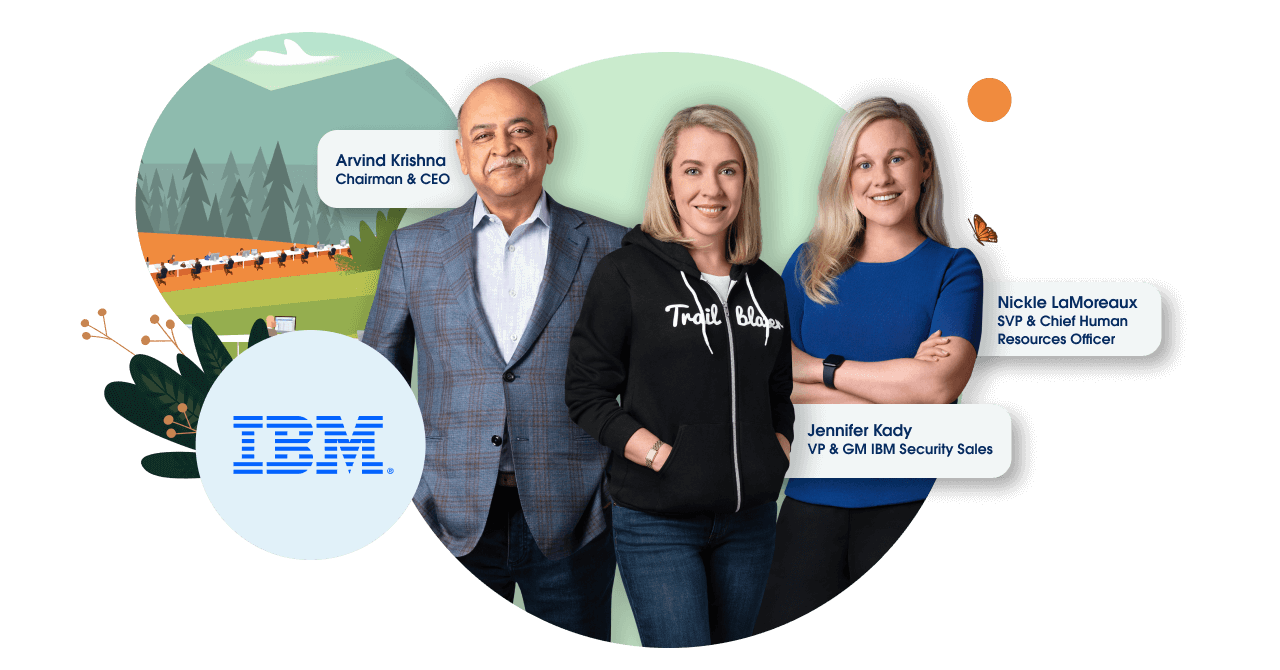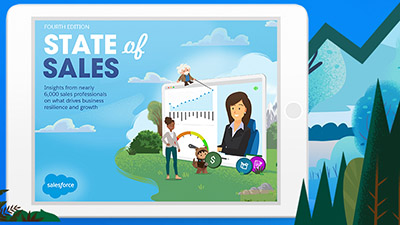How IBM’s collaborative communities build a more vibrant work culture.
Learn how IBM is innovating for the next 100 years of work with channel-based communication.
In a business the size of IBM, the flow of work has the power to affect everything from employee productivity to partner relationships to customer experiences. But IBM is used to big impact. Since 1911, the tech giant has helped pioneer the information age, developing new machines and processes to make business systems (and life) easier.
Today, the company has grown to hundreds of thousands of employees and customers worldwide, driving progress through its cloud, SaaS, global business, and technology services, as well as its flagship AI solution IBM Watson. And to make the IBM machine work, impeccable service and truly connected experiences are crucial.
A 30-year IBM veteran with roles in Watson, Hybrid Cloud, information management, and cognitive software, Arvind Krishna became the company’s Chairman and CEO at the start of 2020 — a crucial time for supporting employees and customers alike as the future of work began changing.
With Einstein 1, one integrated platform, channel-based communication and swift decision-making is finally possible. And as a global strategic partner for Salesforce and the world’s largest Slack customer, IBM is yet again leading the way by transforming business and work. Let’s take a look at how Arvind and the entire IBM organization are transforming employee workflow, service, and sales with Salesforce.
Table of Contents
1. Accelerate work internally and externally with channel-based communication.
One of the world’s largest technology companies, IBM has more than 250,000 employees (or “IBMers”) spanning 170 global offices. To keep them all connected, IBM was an early adopter of Slack, launching among just 70 engineers in 2016. Just two years later, more than 100,000 employees were using the app.
Slack has allowed IBM to transform how it has traditionally worked, accelerating communication and business, even eliminating internal email to share company announcements. On Arvind’s first day as CEO, the first thing he did was send a message to all employees on Slack. To further drive transparency and alignment from the top down, he began conducting executive question and answer sessions or “Ask Me Anything” communities (AMAs) for employees to interact with him and other IBM leaders.
Keeping IBMers connected has been even more important over the past year, as employees have sought to connect about, discuss, and understand social injustice in the U.S. and around the world. Slack has helped employees find like-minded individuals and allies to converse with through forums where they can learn from one another and decide on actions to take.

What drives sales growth and productivity during a pandemic? Find out in the State of Sales report.
Fill out the form to get access to insights from 6,000+ sales professionals on how to sell to today’s virtual buyers.
2. Let customers choose their preferred service channel.
IBM has transformed its service organization across 10 business units, swapping out disjointed experiences for incredible customer service and self-service alike. Customers can choose to engage on their preferred channel like the IBM support community, live chat, email, phone, or via Watson chatbot. Agents can then use Slack in critical situations where time is of the essence.
For instance, when a large global brand’s system is down, IBM teams across multiple product areas can easily swarm the problem. Using Slack, support agents bring in other team members to collaborate end to end on the inquiry, easily conversing in real time, diagnosing the situation, and fixing it faster instead of escalating elsewhere. Plus, IBM creates a hypercare Slack channel for new service agent onboarding and training for Service Cloud, dispatch, and field service where they can ask questions and problem solve in real time.
Self-service options like chatbots and customer support communities allow customers to seek answers on their own terms. Communities allow customers to open or check on the status of their cases through digital channels like bots or community forums. And with the combined intelligence of Salesforce Einstein and IBM Watson, customers can receive faster, more accurate answers, pointing them to helpful resources to help with case deflection. Arvind believes self-service options will eventually become ubiquitous among customer, team, and partner experiences alike.
“As consumers, we want to interact when we want to, how we want to,” he said. “We expect that someone has thought about all the data that might be relevant to us.”
To deliver even more capabilities and self-service innovation, IBM integrates with AppExchange ISV partner Copado. Copado’s automated development features prevent downtime, not only internally as IBM’s service and sales production orgs work together, but also externally for customers. These automated activities ultimately allow IBM’s production teams to build better and faster in a less manual way. And rather than making a customer wait for updates, new front-end functionality can be rolled out immediately in a customer community while Copado helps ensure the process is smooth and effective.
3. Increase sales velocity with a unified seller experience.
Hearing directly from customers is crucial in both service and sales. With Slack, sellers can communicate inside and outside the organization, hearing directly from customers to accelerate deal cycles.
“It's important for us to understand some of the nuances that are taking place real time within a client,” said Jennifer Kady, VP & GM IBM Security Sales. “And Slack affords us that ability. Whether I'm speaking with our delivering deployment teams or working with end users that are performing with one of our platforms, I have the ability to break those conversations into pieces. And I can do that securely with the Slack platform."
Plus, with Customer 360, sellers can leverage Slack together with sales data to take client ideas, access the people and information they need, discuss how IBM can assist the client, and build the solution straight into subsequent actions that help the customer move forward.
Unifying teams with a single view also accelerates velocity and decision-making capabilities for sales. Previously, much of IBM’s sales processes occurred off the platform in spreadsheets and presentations. Siloed line items meant sellers were unsure whose numbers were correct, causing confusion when attempting to forecast an entire account. Now, teams can get on the same page with built-in templates for community-based collaboration that scale business processes like account planning. And with AI, IBM can automate sales processes and better predict account outcomes.
“I don’t have to have all of our sellers go through a great deal of transformational training and enablement,” said Jennifer. “You can come onto this platform and glean quite a bit of information just from the initial dashboards.”

Ready to build a single view of your customer?
More Resources

Guide
State of Sales Report

Article
Inside the fourth edition of the "State of Service" report.
.jpg)
Guide
The Customer 360 Playbook




